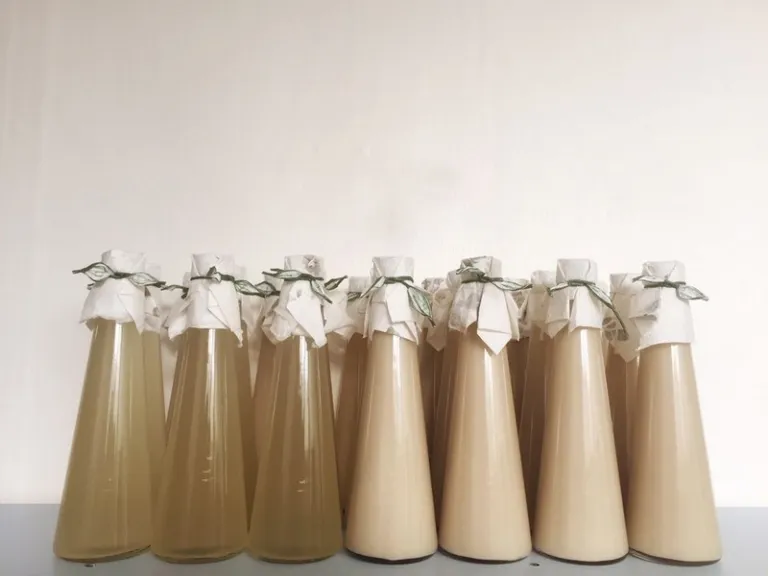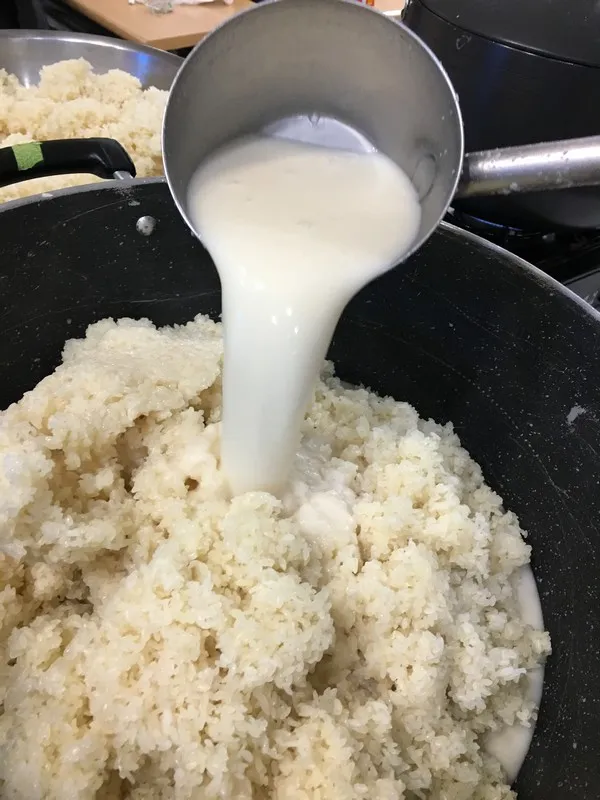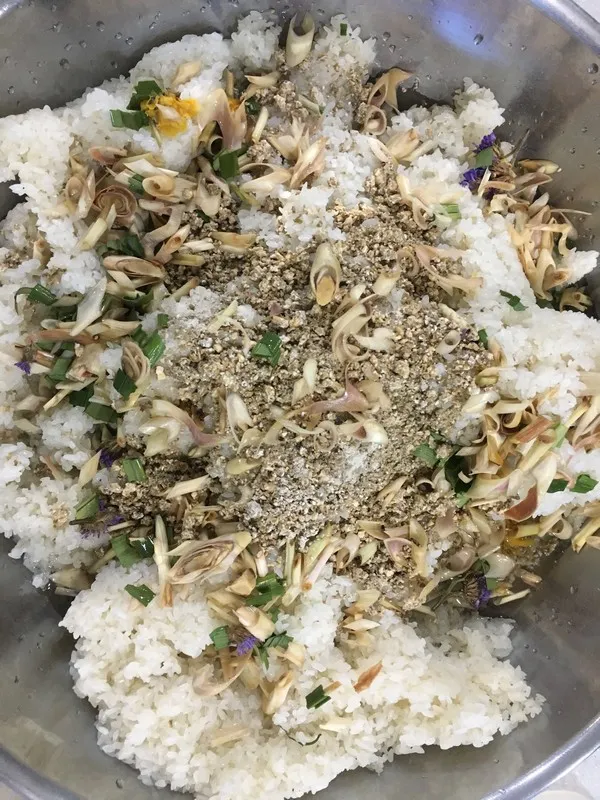Is makgeolli healthy? What is Dong Dong Ju? Does makgeolli go bad? Here are some answers to the most commonly asked questions about makgeolli.

1. Do I Need to Keep Makgeolli in the Fridge?
The answer to this question depends on what kind of makgeolli you have. If makgeolli is fresh (unpasteurized) it will have a shelf life of anywhere between 10 days and 3 months. That means the yeast is still alive and digesting the sugars in the bottle, so yes it absolutely must be kept in the fridge. If the makgeolli is pasteurized, which is the case for most products found in the export market, it will have a one-year shelf-life. These bottles can be stored at room temperature or in the fridge, but definitely should be served cold!
So how do you know if a bottle is fresh or pasteurized? The trick is to look at the expiry date. Most makgeolli will have a printed date for bottling and for expiry. If the expiry is one year, you know the makgeolli is pasteurized! Alternatively, fresh makgeolli is called ‘Saeng – 생’ and pasteurized is called ‘살균’.
2. Is Makgeolli Healthy?
For many years makgeolli was marketed as a ‘Health Drink’. But just how healthy is makgeolli? Well first of all, it is alcohol. Any alcoholic beverage is fine in moderation, but not exactly the healthiest of drink choices. That being said, there is a reason why makgeolli, more than other alcoholic beverages, gets touted as a health drink. Unpasteurized makgeolli contains a very high lactobacillus content, which is certainly very good for your gut health. Think yoghurt, but supercharged.
It also has high fiber content and is rich in amino acids and vitamins, so it’s great for digestion and a host of other health buzz words like ‘anti-inflammatory’ and ‘anti-aging’. But don’t forget that not all makgeolli is created equal. A lot of commercial, mass-produced makgeolli contains artificial sweeteners such as aspartame and phenylalanine. So whenever anyone asks us ‘Is makgeolli healthy?’ the answer isn’t exactly a simple one. Our solution? Brew your own to be sure your own to take advantage of as many of the health properties as possible!


3. What is Dong Dong Ju?
Easily the most asked question in any makgeolli class or tasting tour, is what’s the difference between makgeolli and dong dong ju? Many times on a menu at a Korean restaurant, you will see makgeolli, but then also ‘Dongdongju’. Dong dong ju is usually a little bit more expensive, but 99% of the time it comes out looking like makgeolli. That’s because…..it is makgeolli. One of the great misunderstandings of all time when it comes to makgeolli, is that dong dong ju is somehow categorically different. If you have read our breakdown of the categories of Korean traditional alcohol, you will know that actually there is no separate category for dong dong ju.
All recipes in the traditional literature of Korean brewing have expressive names to reflect the profile of the drink. For example one of the recipes we teach in our brewing classes is ‘Seoktanju’. While ordinarily ‘Seoktan’ means ‘coal’ in modern Korean, in this case, it takes the Hanja (Korean Chinese characters) to mean ‘regret’. Before you go thinking ‘Regret Booze’ is the worst marketing in history, it actually means ‘So delicious that regret comes after drinking because it is gone’. And so it goes that ‘Dong dong ju’ also has a name with a deep meaning. One of the translations is ‘Floating Ants’ which is describes the floating rice grains on top of cheongju. For this reason, many purists believe Dong dong ju should be served as a cheongju with a few floating rice grains left in for good measure.
And so to put it simply, Dong dong ju is the name of a recipe in the same way a pale ale or an IPA is a kind of beer. These days you will see lots of makgeolli bottles that are called ‘Dong dong ju’, but suffice to say they are categorically no different to makgeolli.
4. Makgeolli vs. Nigori Sake: What’s the difference?
Sake is a lot more well known internationally than sool, so if you’ve tried nigori sake you might be wondering how it differs from makgeolli. Nigori sake is cloudy and has much the same look and texture as Korean makgeolli, but the taste is very different. This comes down to how makgeolli is made. Makgeolli is made using ‘nuruk’, a wild fermentation starter that contains a host of yeast, enzymes and wild bacteria. It is also brewed using high starch content rice such as chapssal or ‘short grain sticky rice’ as well as Korean eating rice. As a result, the flavour profile of most makgeolli is complex and varies from region to region. Nigori sake is also made from rice, but uses the Japanese starter ‘Koji’ and the yeast strain selected by the brewer. Even though they both look similar in appearance and body, makgeolli and nigori sake are quite different when it comes to flavour.
5. Can I Drink Makgeolli Past the Expiry Date?
The short answer? Yes! Makgeolli that is fresh and unpasteurized is a live brew where the yeast continues to digest sugars. That means the taste of the makgeolli will change over time, and depending on the brew, that can be a good thing. Expiry dates, or best before dates, are regulated according to the tax authority in Korea and are often in the taste range of how the brewer would like you to drink their products. However, we have definitely had brews in the fridge longer than their expiry date and thoroughly enjoyed them.
Bear in mind though, not all kinds of makgeolli improve with age. If it has a low alcohol percentage, or if it uses a strong kind of nuruk like ‘bio nuruk’, expect the taste to be sourer as time goes on. It may still be drinkable, but not to everyone’s tastes. On the other hand, brews that have a high alcohol percentage or more sugar content often improve over time and can be enjoyed even a few months after the expiry date.

